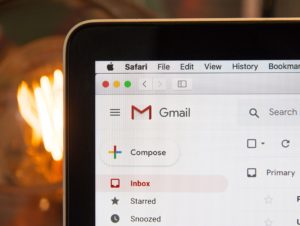The fabulous thing about our technology-driven world is that we can share ideas (and pitches) with the simple click of a button. The key to getting editors to listen to what you have to say, however, lies in the way you present yourself and your brand. I’ve comprised my fail-safe checklist of seven ways to make your pitches stand out– all of which are tried and tested by yours truly.
1. Know the Publication
Doing your homework sounds like common sense doesn’t it? You’d be surprised. Make sure you read a few of the magazine’s issues or a few weeks worth of blog posts before you pitch. Get a feel of the publication’s structure and layout formula. Could your product be stuck right into the page you’re reading? If so, your brand is probably a good fit.
2. Make it Personal
Editors are people too, and they want to be acknowledged. Always address the editor or blogger by name (and make sure its spelled correctly!). Different editors put together each section of a magazine and, while their byline is usually listed on the page, it’s always a good idea to double-check by calling the magazine’s editorial department. Ask for an intern or editorial assistant to confirm the correct contact for the page you want to pitch. But never pitch over the phone–you’re just confirming the contact.
3. Keep it Short and Sweet
Endless and impersonal press releases have become as obsolete as dial-up internet. Today’s pitch consists of an introduction, a hook, a mention of what makes the idea timely and contact information, all of which should be formatted like a brief one-paragraph letter. Devote the rest of the page to a fantastic picture or two that you’ve embedded in the email, and editors should have all the information they need to decide whether they want to move forward. Simple, right?
 4. Make it New!
4. Make it New!
The one word that’s guaranteed to make an editor happy is “new.” “New” is what feeds a publication: magazines want to be first to feature a new product or service. If what you are pitching is not new, don’t worry! The trick is making your product or service fresh and relevant by it into a current trend, event, or holiday.
5. Include One of Two Great Pictures
The picture you send with your pitch is the first thing an editor will look for. If they connect with the picture, then they’ll go back and read the pitch, so make sure the photo or photos you include are knock-off-your-socks worthy. Use crisp, well-lit images against a clean, white background, and embed the low-res (72 dpi) image into the email instead of sending large, inbox-clogging files. And avoid sending images as attachments at all costs; editors never open attachments.
6. Provide a Header or Subject
Give editors a taste of what they can expect from your pitch. If your product is a line of bright umbrellas, a teaser like “Fun Wet Weather Gear Under $25” tells editors right off the bat that your product can fit into a handful of categories (bargains, rain gear, fun colors) and as an added bonus it shows that you’ve put in the effort to make what you’re pitching a good fit for the publication.
7. Remember the Golden Rule
Truthfully, editors don’t need– or have the time– to hear your full-blown story. What editors do need, however, is the specific and relevant nugget of information that matters to the pages they write and produce, as well as to the publication as a whole. Help editors easily make that connection, and you’ve got your press!
